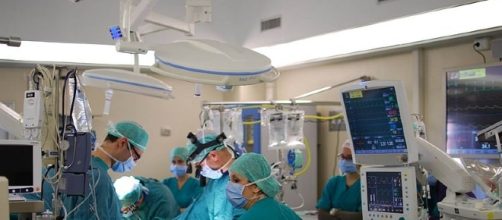The pernicious effect of a heart attack includes the permanent damaging of heart muscle’s capacity to pump blood, causing healthy tissue to scar. People who suffer from this condition are often fatigued and cannot do as many things as they used to. They are also more prone to cardiac arrest, a condition that leads to death. Medication can help, and a heart transplant is sometimes used, though the necessity of using powerful anti-rejection drugs makes that option dangerous at the very least. The availability of donor hearts is also a limiting factor.
According to the CDC, 5.7 million Americans suffer from Heart Failure. Half of the people with the diagnosis die within five years. Heart failure costs the United States $30.7 billion a year in health care services, medication, and lost productivity.
Stem cell patches on the horizon
A new option for people with this kind of heart failure is on the horizon, according to Mach. The idea is to grow patches of beating heart cells from a patient’s own tissue and then cover the parts of the heart that have been scarred by a cardiac event. The technology has the promise to allow heart failure patients to live nearly normal lives and to reduce the need for heart transplants.
How the patches work
Beating heart cell patches are created when blood cells are extracted from the patient and are transformed into stem cells using well known genetic engineering techniques.
Then the stem cells would be used in a 3D printer to create living heart tissue, geared to match the exact size and shape of the area of the heart that has been scarred. Then an open heart surgery procedure would be undertaken to implant the patch on the scarred tissue, including blood vessel grafts that would integrate the new tissue into the patient’s cardiovascular system.
The procedure would be a delicate one. The surgeon might cut the scarred tissue away and replace it with the patch or just overlay it with the theory that the scarring would go away in time. The hope is that the new tissue will beat in synchronicity with the rest of the heart.
The beauty of the procedure that even though it would cost $100,000, it will still be cheaper than a heart transplant, which costs $500,000 not including the expense of the anti-rejection drugs.
Researchers have enjoyed some success with the procedure in mice and pigs. The hope is that human trials can start in five years with the procedure being available in a clinical setting in about Ten Years.


